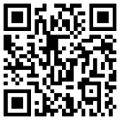Kelase Learning Methods to Improve Learning Outcomes Flipped Classroom
Abstract
Various teaching methods applied through information and communication technology (ICT) in learning becomes one important thing to improve learning outcomes. The application of ICT in learning to be one of the important things for the improvement of the quality of learning. Various learning methods are also implemented by integrating ICT in its implementation. One of the methods which used in this research is flipped classroom. Flipped classroom model in this research uses the development of video and audio media and e-learning platform kelase as online media that can be used to support flipped classroom model study. This study aims to improve the quality of student learning outcomes. The method which used in this research is a classroom action research methods. The results showed an increase in learning, cognitive domain results, the minimum cycle I and II increased In the affective domain the learning results of cycles I and II show excellent results.
Full Text:
PDFReferences
Amresh, A., Carberry, A. R., & Femiani, J. (2013). Evaluating the effectiveness of flipped classrooms for teaching CS1. In Frontiers in Education Conference, 2013 IEEE (pp. 733–735).
Bertram, A., & Waldrip, B. (2013). ICT for ICT’s sake: Secondary teachers’ views on technology as a tool for teaching and learning. Australian Educational Computing, 28(1).
Bishop, J. L., & Verleger, M. A. (2013). The flipped classroom: A survey of the research. In ASEE national conference proceedings, Atlanta, GA. Vol. 30. No. 9. (pp. 1–18).
Bormann, J. (2014). Affordances of Flipped Learning and Its Effects on Student Engagement and Achievement. University of Northern Iowa.
Direktorat Pembelajaran dan Kemahasiswaan Direktorat Jenderal Pendidikan Tinggi Kementerian Pendidikan dan Kebudayaan. Panduan Penyusunan Capaian Pembelajaran Lulusan Program studi (2014).
Joyce, B., Calhoun, E., & Hopkins, D. (2008). Models of learning, tools for teaching (3rd editio). Buckingham: McGraw-Hill Open University Press.
Joyce, B. R., Weil, M., & Calhoun, E. (2000). Models of Teaching (6 Edition). Allyn & Bacon.
Karabulut‐Ilgu, A., Jaramillo Cherrez, N., & Jahren, C. T. (2018). A systematic review of research on the flipped learning method in engineering education. British Journal of Educational Technology, 49(3), 398–411.
Ko, J., Sammons, P., & Bakkum, L. (2016). Effective teaching. Reading, Berkshire: Education Development Trust.
Marlowe, C. A. (2012). The Effect of the Flipped Classroom on Student Achievement and Stress. Bozeman, Montana.
Overmyer, G. R. (2014). The flipped classroom model for college algebra: Effects on student achievement. Colorado State University: Fort Collins.
Pahl, C. (2004). A Taxonomy for Interactive Educational Multimedia. Dublin 9, Ireland.
Vaccarino, F., Comrie, M., Murray, N., & Sligo, F. (2007). Action Research Reflections: The Wanganui Adult Literacy and Employment Project. Wellington and Palmerston North, New Zealand.
Wolff, L.-C., & Chan, J. (2016). Flipped classrooms for legal education. Springer.
DOI: http://dx.doi.org/10.17977/um010v1i12018p005
Refbacks
- There are currently no refbacks.
 | Letters in Information Technology Education (LITE) |

1.png)
1.png)
1.png)
4.png)
1.png)
.png)

3.png)
1.png)
1.png)
